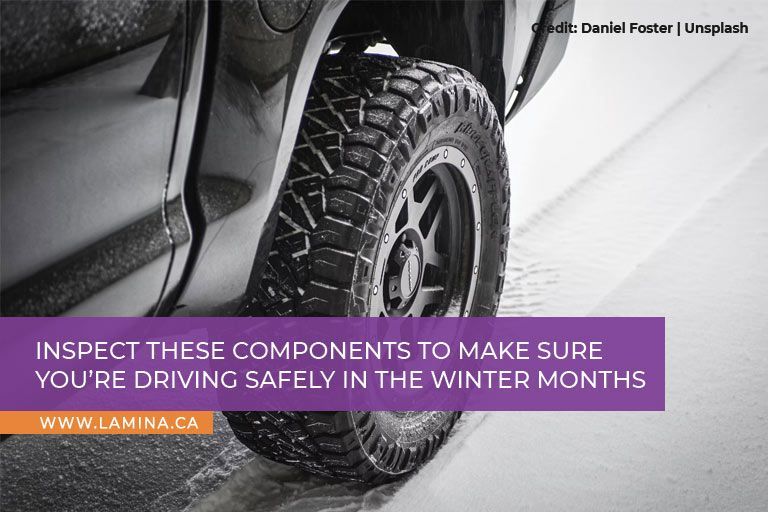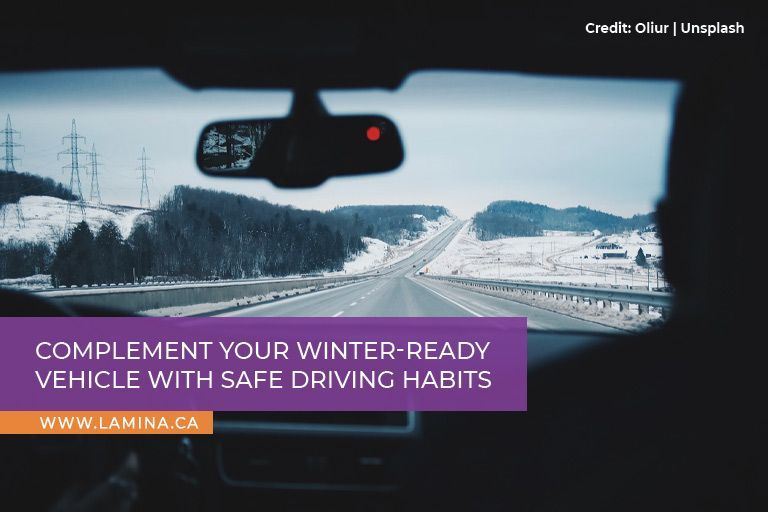- Tires
The first line of defense against winter's slippery roads is a good set of tires. Here's how to optimize your tire situation:
Consider switching to dedicated winter tires, specifically designed for optimal grip in cold weather and on snow/ice. Their deeper treads and softer rubber compound provide superior traction compared to all-season tires. Traffic Injury Research Foundation emphasizes that
inadequate traction renders electronic stability control useless, making winter tires an essential component.
Cold weather causes tire pressure to drop. Regularly check and adjust your tire pressure to the manufacturer's recommended level (found on a sticker inside the driver's door jamb) to maintain safety and fuel efficiency.
Ensure your current tires have adequate tread depth. Worn-out tires lose traction significantly, especially in winter conditions. Measure the tread depth using a penny (insert the head into the tread groove: if the top of Lincoln's head is visible, it's time for new tires!).
2. Battery
Cold weather is a battery's nemesis. A healthy battery cranks your engine efficiently, but low temperatures can sap its power. Get your battery tested — most auto shops offer this service for free. If it's nearing the end of its lifespan (typically 3-5 years), consider replacing it before winter arrives. Remember, a dead battery in a snowstorm can be a major inconvenience, so proactive maintenance is key.
3. Fluids
Maintain optimal fluid levels throughout your car.
4. Engine Oil
Switch to a thinner-weight oil during winter to improve engine startup and circulation. Consult your owner's manual for the recommended oil weight specific to your car and climate.
5. Coolant/Antifreeze
Ensure your engine coolant has the proper mix of antifreeze to water (typically 50/50 or 70/30) to prevent freezing and protect your engine from damage.
6. Windshield Washer Fluid
Top up your windshield washer fluid with a winterized formula that won't freeze in cold temperatures.
7. Wiper Blades
Effective visibility is paramount for safe winter driving. Worn-out wiper blades can leave streaks and smear snow, hindering your view. Replace wiper blades that are cracked, brittle, or leave streaks across the windshield. Opt for winter wiper blades designed to handle snow and ice accumulation.
8. Lights
Headlights, taillights, brake lights, and turn signals are vital for seeing and being seen during snowstorms and low-light conditions. Replace any burnt-out bulbs promptly.
9. Brakes
Have your brakes inspected by a qualified mechanic to ensure they are in proper working order. Address any worn pads or rotors to maintain optimal stopping power on slippery surfaces.
10. Emergency Kit
Be prepared for the unexpected. Compile a winter emergency kit to keep in your car. This should include items like an ice scraper, snow brush, jumper cables, a flashlight with extra batteries, a blanket, a non-perishable food and bottled water, a first-aid kit, and a road map (in case your GPS fails). Consider adding traction mats or sand to aid in getting unstuck from snowbanks.
11. Visibility Enhancements
During winter, the sun sets earlier and visibility can be poor thanks to snow and sleet. Consider investing in a good pair of polarized sunglasses to reduce glare on snow-covered roads. Additionally, consider a high-mounted brake light or strobe lights to enhance your car's visibility in harsh weather conditions.
12. Interior Care
Consider investing in weatherproof floor mats to catch slush and snow, preventing your car's carpets from getting soaked. A good quality car de-icer can help prevent your windshield from icing over from the inside.
Budgeting for Winterization
Winterizing your car can involve some upfront costs, but neglecting essential maintenance can lead to expensive repairs down the road. Here are strategies for effectively budgeting for winter car care:
Start by identifying the most critical needs for your car. Does your battery need replacement? Are your tires worn? Focus first on the essential components that directly impact safety and performance.
Compare prices for tires, batteries, and auto services from different retailers. Look for promotions and discounts, especially during the early fall months before the winter rush.
- Do-It-Yourself (DIY) Where Possible
If you're comfortable with basic car maintenance, consider tasks like topping up fluids, changing wiper blades, and checking tire pressure yourself. Always consult your owner's manual for proper procedures and safety precautions before performing any DIY maintenance.
Plan ahead for recurring winterization costs. Set aside a dedicated budget or savings account to cover expenses like tire rotations, fluid changes, and battery inspections. This proactive approach can help you avoid unexpected financial burdens during the winter months.
Consider spreading the costs out over time. Many tire retailers offer financing options for winter tire purchases. Likewise, services like oil changes and fluid top-ups can often be bundled with regular maintenance checkups to maximize your budget.
Tools like
hassle-free online installment loans can be a responsible alternative to payday loans if you need additional financial support to cover winterization costs. Lamina offers hassle-free online installment loans with clear terms and competitive rates.
Winter Readiness
Winter preparation extends beyond the car itself. Here are some additional tips to ensure holistic winter readiness:
Consider subscribing to a roadside assistance program that offers services like towing, jumpstarts, and flat-tire changes. This can provide peace of mind and help you avoid being stranded in the cold.
Adjust your driving habits to accommodate winter conditions.
Keep your windshield, headlights, and taillights clean. Remove snow and ice from your vehicle before driving.
Reduce your speed and increase following distance in winter conditions. Brake gently to avoid skidding.
Carry a fully charged phone, emergency kit, and warm clothing. Let someone know your travel plans and expected arrival time.
Stay focused on the road and avoid distractions like texting or eating while driving.
If you're uncomfortable driving in winter conditions, consider alternative transportation options or seek professional driving lessons.
- Pay Attention to Where You Drive
According to Workers’ Safety & Compensation Commission, “Nearly
30% of car accidents in Canada happen on snowy or icy roads.” Be especially cautious on bridges and shady areas where ice accumulation is more likely.







